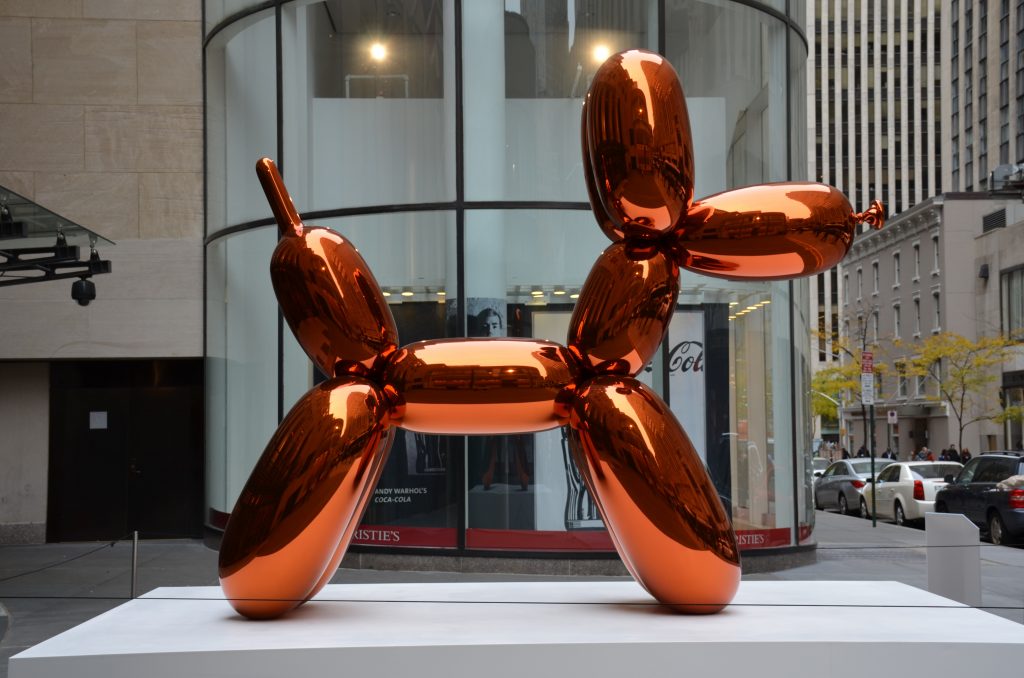Kitsch or Cool
When does art become kitsch and when does kitsch become art?
My first recollection, in fact my first realisation, that something was ‘kitsch’ without even knowing the word, was when I received the First Holy Communion pictures that were given out to commemorate the event. I don’t know if they still exist, but I remember them as being awful; some even had lacy edges! Where is the line that separates kitsch from art? Is there one?

This is a question of individual taste, which is supported by one’s education and background. But I find that not even this formula is fool proof. I have come to the conclusion that being able to recognise and appreciate art is an innate gift like having an ear for music. One either has it or one doesn’t.
There are contemporary artists today who tongue-in-cheek explore kitsch as a challenge and present works that, to me, are simply painful. Is this being done purposely to wean hoi polloi off kitsch by rubbing their noses in it? If so, the ever-increasing amounts of kitsch we see at Christmastime simply shows that this theory doesn’t work! People love kitsch; nodding Santas and plastic angels vie with miles and miles of tinsel and other decoration, which take first prize for stretching the imagination to its most bizarre limit. People obviously love it. It’s everywhere.
But then who are we to sit in judgement like Rhadamanthus and dictate what people are to like and what they are not to?
Sometimes, when driving around, I come across an 18th century niche which has been restored to an inch of its life. Its patina obliterated and looking as if it came off a factory shelf a couple of hours ago. It’s happening too often. I sometimes see houses, the bones of which are obviously a couple of centuries old, being transmogrified into wannabe High Ridge villas – all squeaky clean and hi-tech. It makes me squirm.
But then I have to squirm in private, as one man’s meat is another man’s poison and what is hideously ugly to me is probably the epitome of good taste to my neighbour. He may think that my own personal sense of decor and art as ‘fuddyduddy’ and ugly.
Which brings me back to religious art, because in Malta we are surrounded by it wherever we look. Do I prefer a 17th century primitive Madonna and Child over a soppy Bougereau type of painting of the same theme? Yes. Definitely. But why?
It’s difficult to explain isn’t it?
It’s because one’s perception of beauty varies so much that this might be a never-ending story. What I find dumbfounding in Malta is that, while for three centuries we had the most amazing art treasures being amassed before our eyes, and that the nucleus of our artistic DNA was formed while the aristocratic and princely Order ruled us, we have, inexplicably, degenerated into kitsch.
I sometimes have to close my eyes in utter horror when I enter a church – usually 17th century – and am confronted by the most kitsch accretions that are meant to exhort and revive our faith. My particular unfavourite is the poster of Christ of Divine Mercy with a spray of multicoloured sprays issuing from his chest as if the Red Arrows had just flown out of it! Maybe Sister Faustina was on acid at the time, but I simply can’t understand how or why mercy – whether divine or not – should be iconographically interpreted like this. It’s beyond comprehension.
I know what you’re thinking. Why hasn’t Kenneth mentioned Jeff Koons? I left him to the end as Koons is so important in this argument about taste. Koons makes art out of kitsch and in consequence shows kitsch up for what it really is! But what is it? You tell me.








